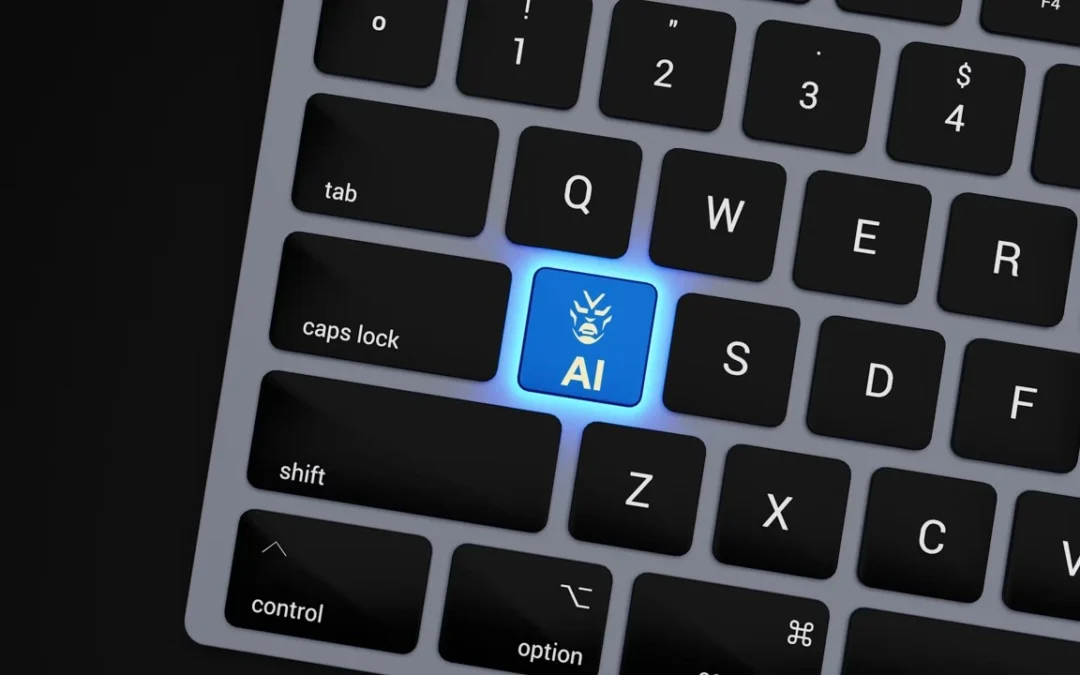There is more and more talk about AI in the company. Large language models, retrieval augmented generation, AI agents or AI assistants are technical terms that are mentioned time and again. This blog post is primarily about the meaning and function of AI assistants.
Table of Contents
What is an AI assistant?
An AI assistant is a system that is designed to support people in their daily work. However, an AI assistant always acts reactively and requires human input to become active. If it becomes active, it is programmed to always solve a specific task.
Typical examples of AI assistants can already be found in everyday life. In our private lives, for example, these include voice assistants such as Siri or Alexa, while at work they are often chatbots or other interaction systems that assist people in their daily work.
The areas of application in the company can therefore be very different (even across different departments). Classic AI assistants can be found, for example, in the form of intelligent chatbots on websites to relieve the burden on customer support, in appointment management tools or in data analysis. The amberSearch solution is therefore also an AI assistant.
How do AI assistants work?
The core technology behind AI assistants is Natural Language Processing (NLP)-based systems, which in turn is a sub-discipline of AI. This technology is designed to understand, process and interact with human language.
NLP is primarily used to analyse the semantic meaning of the words entered rather than the words themselves – as is the case with a classic keyword-based search, for example. If an AI assistant receives a task, it can provide a corresponding response based on the algorithms stored.
By default, the process begins with the input, which is usually text or speech (usually the input is simply called a prompt). A language processing module uses machine learning algorithms to analyse the semantic meaning in order to determine the most appropriate response.

Example of a typical sequence of an AI assistant
Despite their impressive capabilities, AI assistants are limited to certain use cases and task areas. Their performance depends heavily on the quality of the underlying data and models, as well as their ability to extract relevant information from contexts. These limitations show that AI assistants are primarily tools to support and not completely replace human labour.
Difference between AI assistants and AI agents
Anyone who takes a closer look at AI in the company will sooner or later come across the term AI agent or multi-agent systems.
In contrast to an AI assistant, an AI agent is not a reactive system, but an autonomous and therefore independent system that makes its own decisions and can act accordingly.
| Feature | AI Assistant | AI Agent |
|---|---|---|
| Mode of Operation | Reactive | Proactive |
| Input | Requires explicit input from a human | Acts autonomously and makes decisions independently |
| Objective | Completion of specific, predefined tasks | Achieving predefined goals through independent decisions |
| Examples | Voice assistants (Siri, Alexa), chatbots | Autonomous robots, game AI, autonomous trading systems |
| Application Areas | Support with routine tasks, customer service | Complex decision-making, dynamic environments |
| Technology | Natural Language Processing, often combined with Machine Learning | Machine Learning, Reinforcement Learning |
| Autonomy | Low – operates only on request | High – acts independently of external input |
| Interaction with Humans | Direct interaction required | Can operate without direct human interaction |
| Examples of Corporate Use | Automated scheduling, responding to customer inquiries | Autonomous logistics systems, optimization of business processes |
The table shows the differences between AI assistants and AI agents. One thing is clear: AI assistants are much more visible in everyday life than AI agents, as they tend to be integrated into a company’s processes and workflows in the background.
Advantages and challenges of AI assistants in the company
As with all systems, AI assistants have both advantages and challenges. This section therefore compares the advantages and disadvantages.
Advantages
Classic advantages of AI assistants include, for example, searching for information in everyday working life using enterprise search, relieving the burden of routine tasks and improving the user experience. This enables companies to realise considerable efficiency and productivity gains.
You are currently viewing a placeholder content from YouTube. To access the actual content, click the button below. Please note that doing so will share data with third-party providers.
More InformationThe challenges
On the other hand, there are questions to be answered regarding data protection, the need for human control/interaction and the existing limitations due to the reactive nature.
Combination of AI assistants and AI agents
After the initial phases of euphoria about the new technology, many companies have become disillusioned. A chatbot (or AI assistant) is not the solution to all problems. In order to really add value, the right use cases must be defined and smart integration (e.g. using connectors) must take place. Only then will AI assistants be able to realise the promised added value.
As a result, methods such as Retrieval Augmented Generation (RAG), Multi-Hop Question Answering and other methods are being incorporated into many AI assistants to make them ‘fit’ for everyday use.
Another great potential is the combination of AI assistants and AI agents. The different strengths of the two approaches can be successfully combined. Possible use cases for the combination of AI agents and AI assistants include the following:
IT support in companies:
- AI assistant: A virtual assistant helps to solve everyday IT problems by providing instructions or answering tickets.
- AI agent: The AI agent monitors the entire network, proactively detects and resolves issues such as security threats or performance degradation before they impact operations and informs the assistant, who then notifies the IT team and affected users.
Automated customer service platform:
- AI assistant: A chatbot answers customer questions, forwards them to the right contact person and collects information.
- AI agent: The AI agent monitors interactions in the background, analyses customer feedback and proactively initiates measures such as adapting service processes or creating personalised offers for returning customers.
Intelligent task management in companies:
- AI assistant: The assistant helps employees to organise their daily tasks, reminds them of deadlines and suggests priorities.
- AI agent: An AI agent analyses long-term projects, identifies bottlenecks or optimisation opportunities and autonomously delegates tasks to various team members in order to increase efficiency.
This already reveals a wide range of promising application scenarios that are complex to implement. As a lot will develop in this area over the next few years, it will be exciting to see how these approaches develop.
